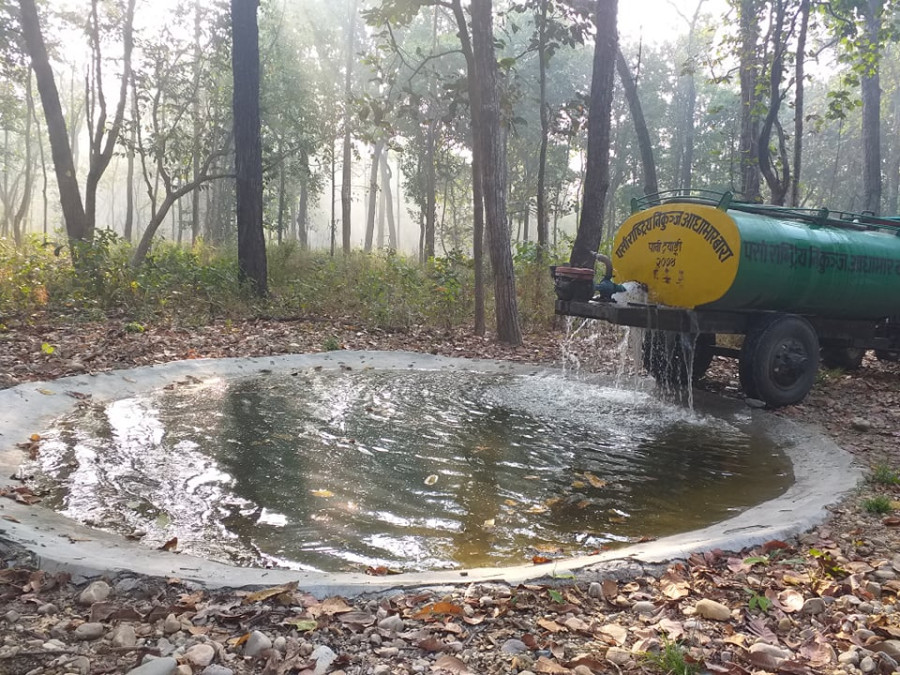Climate & Environment
Conservationists worry as water scarcity inside Parsa National Park worsens
There are about a dozen streams and 15 ponds inside the park. But most of them dry up during the dry season, between September to April.
Shankar Acharya
Water shortage inside Parsa National Park has conservationists worried about the future of the protected wildlife, including endangered Bengal tigers and one-horned rhinoceroses.
There are about a dozen streams and 15 ponds inside the park. But most of them dry up during the dry season, between September to April.
Ashok Ram, the park’s acting conservation officer, said the park authority built around 60 artificial ponds to address the problem of water shortage in two years, but to little effect.
The park authority does not have the means to fill all the ponds with water throughout the dry season.
“We fill some of these ponds once every week using water tankers, but this solution is not practically viable,” said Ram. “Bringing in tankers every week inside the park disturbs the wildlife as well as degrades their habitat.”
As an alternative solution, the park authority is planning to supply water to these ponds by building a network of pipelines.
The project has, however, hit a snag. After spending Rs 2.5 million on a deep boring system at Adhabhar, the park authority found to their dismay that the area’s underground water system was also dry.
“There was no sign of water, even 150 metres deep. This is not a good sign,” said Ram.
The park, which covers an area of 627 sq km, is spread in three districts of Parsa, Bara and Makwanpur. It has only three natural lakes —Halkhoriya, Lauki and Kamini. The most abundant water inside the park is available in the Rambhauribhatha area, where most wildlife are found.
“If the problem of water scarcity is not immediately resolved, there is a high chance of animals straying into human settlements. We fear a rise in human-wildlife incidents and depredation of crops and properties,” said Ram. Parsa National Park is home to 37 species of mammals, 490 bird species, 31 species of butterflies and 13 species of reptiles.




 9.12°C Kathmandu
9.12°C Kathmandu








%20(1).jpg&w=300&height=200)

